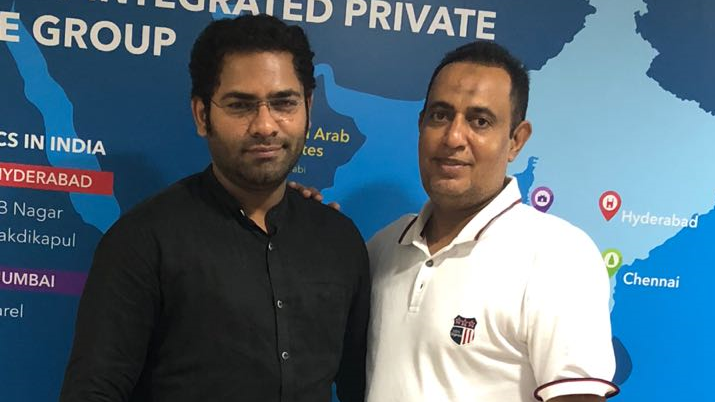
Dr G Moinoddin with the patient
Suleiman, a 51-year-old citizen of Kenya, was suffering from metabolic syndrome and obesity, weighing a 100 kgs at the time of surgery. He had early diabetes and high levels of triglycerides. He underwent a single keyhole sleeve gastrectomy. During a one-and-a-half hour long dure, a 3 cm laparoscopic incision made.
The Single Incision sleeve gastrectomy (SILSG) is performed with only a single laparoscopic incision through the belly button. The single incision has benefits of little to no scars as well as reduced postoperative pain because of the single incision, which allows for a quicker recovery. The single incision is less invasive than the traditional gastric sleeve therefore, the complication rate is lower.
"Single Incision sleeve gastrectomy is fast becoming a preferred surgical technique in bariatrics. This procedure is superior as we sew over the staple line with omentoplasty, a surgical procedure in which part of the greater omentum is used to cover or fill a defect, augment arterial or portal venous circulation, absorb effusions, or increase lymphatic drainage. In similar cases, previously discussed in medical literature, the incision site is simply stapled. This method reinforces the healing of the incision site”, says Dr G Moinoddin, Consultant Bariatrics & Advanced Laparoscopic Surgeon at Gleneagles Global Hospitals, Richmond Road, Bengaluru,
Suleiman is expected to lose around 25 kgs in the first year subject to making lifestyle changes related to diet and exercise.
The advantages of the single incision laparoscopic surgery are numerous including less recovery time, single, virtual scarless incision through the belly button, reduced postoperative pain and less invasive. In fact, all these advantages help patients to get back to normalcy almost immediately after surgery. "Patients are able to walk as soon as 3 hours after surgery. There is no mandatory bed rest either. The patient may resume his or her day to day activities a day after the surgery," he says.
Planning a minimally invasive operation, says Dr Moinoddin, involves an understanding of the steps of the operation and the progression of the different technologies and devices involved. Often times it is necessary to switch camera angles, points of view and a variety of other tools as the operation proceeds. "These surgeries are technically challenging as working with a single incision restricts the angle between instruments. Trocars serve as the gateways that allow minimally invasive instruments to pass, a method that ensures that the chances of hernia are next to nil. The complexities involved means that a high level of expertise is required to perform the surgery," he says.